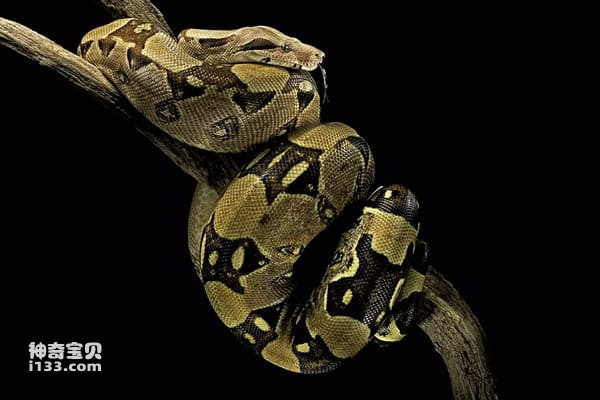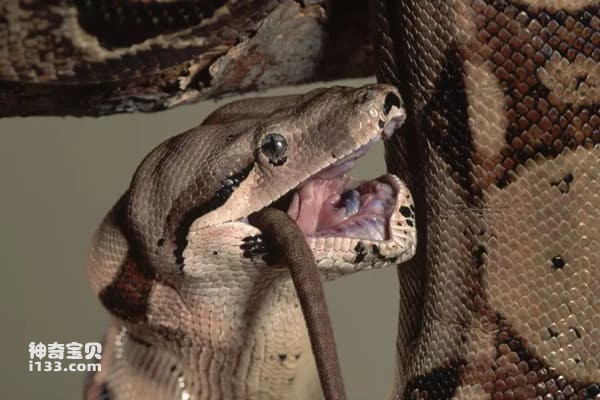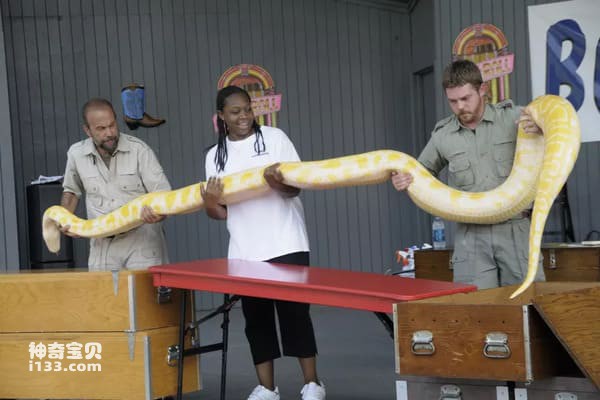Pythons are reptiles that live primarily in Central and South America. Their scientific name "Boa constrictor" is derived from the Greek words meaning "snake" (boa) and "grasp" (constrictor). They are known for their huge size and using their muscular bodies to crush their prey to death.

Scientific name: python
Common names: red-tailed python, red-tailed python
Order: Squamata
Basic Animal Group: Reptiles
Distinguishing Features: Brown body with large, heavy beige spots
Dimensions: 8-13 feet long
Weight: 20-100 lbs
Lifespan: 20-40 years
Diet: Carnivores
Habitat: Tropical forests, grasslands
Conservation status: Least concern
Fun fact: Pythons are excellent swimmers, but they avoid water whenever possible
Pythons are non-venomous snakes known for their large size and crushing their prey to death. They can climb surfaces well, swim, and travel at speeds of up to one mile per hour.
The lifespan of these reptiles is about 30 years, but the oldest can live up to 40 years. They can reach lengths of up to 13 feet and weigh from 20 to 100 pounds. Their skin color, such as pinkish-tan with brown and red patterns, helps them camouflage well in their environment.
Pythons live in habitats such as tropical forests, savannas, and semi-deserts in Central and South America. During the day, pythons rest in rodent burrows on the ground. They are also semi-arboreal and will bask in the sun in trees.

As the boa constrictor devours the mouse's body, the rat's tail hangs from the boa constrictor's mouth.
Pythons are carnivores and feed mainly on mice, birds, lizards and frogs when they are young. When they mature, they will eat larger mammals such as rodents, birds, marmosets, monkeys, opossums, bats, and even wild boar.
Pythons hunt at night using sensor pits on their faces that allow them to detect the body temperature of their prey. Because pythons are slow-moving, they rely on ambushing their prey. For example, they may attack bats sleeping in trees or flying by. They kill by squeezing their victims' bodies with their powerful muscles. Scientists thought this squeezing would suffocate prey, but recent findings suggest the intense pressure from snakes can actually restrict the animals' blood flow. The pressure is so great that the prey's heart cannot overcome it and death occurs within seconds. Once the animal dies, these snakes swallow their prey whole. They have special tubes at the bottom of their mouths that allow them to breathe while eating. Pythons use powerful stomach acid to digest their food. After a large meal, they will need to go several weeks without eating.
Since pythons are nocturnal, solitary animals, they will rest in rodent burrows during the day, but may also bask in the sun for hours in a tree. In cold weather they are almost completely inactive.
Pythons reach mating age around 3-4 years of age. Their breeding season is during the rainy season. The male will slide over the female's body and use his remaining legs to stimulate the cloaca. Females can give birth to 20 to 60 pups.
These reptiles are ovoviviparous, meaning they give birth to fully formed young. The female eats very little during her gestation, which lasts about 100 days. When the eggs are ready to be born, they push out of the cloaca and must open the protective membrane still encased within them. At birth, the hatchlings are about 20 inches and can grow up to 3 feet in the first few months of life. They can survive independently and exhibit natural instincts to hunt and avoid predators.
Pythons are listed as animals of least concern on CITES Appendix II, but they have not yet been assessed by the International Union for Conservation of Nature (IUCN).
The biggest threat to pythons comes from humans, who harvest their skins in the leather trade. In tropical areas of the Americas, people may bring pythons into their homes to control rodent infestations.
There are more than 40 species of pythons. Some examples of species include rubber boas ( Charina bottae ), rose boas ( Charina trivirgata ), and red-tailed boas ( Boa constrictor constrictor ). Rubber pythons live in western North America. As the name suggests, these pythons have rubbery skin and they burrow into the ground. The red python's habitat ranges from California and Arizona to Mexico. Red-tailed pythons are the most commonly used python species as pets.

Workers display a large yellow boa constrictor at a festival in Bowie, Maryland.
In the United States, constrictors are often imported as pets and are sometimes bred into more colorful snakes. While this pet trade may not pose a threat to pythons, an unfortunate risk is that some owners simply release their pets into the environment because they don't realize how quickly these animals can grow. This is particularly dangerous because pythons adapt well to their new environment as long as the temperature is conducive for them to thrive. As a result, they can become invasive species and pose a serious threat to new environments, which can lead to the disappearance of other native species.
We created this article in conjunction with AI technology, then made sure it was fact-checked and edited by a Animals Top editor.